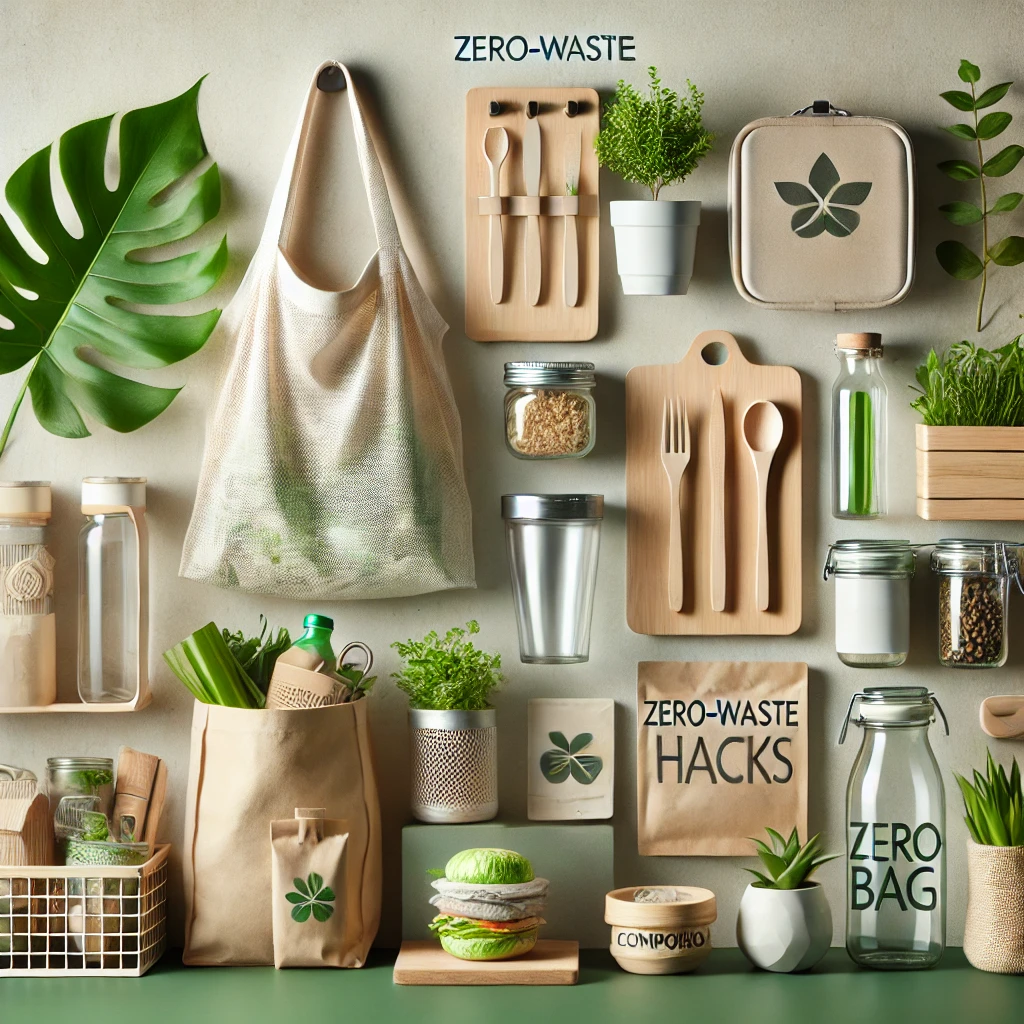
Zero-Waste Hacks: Easy Tips for Reducing Your Environmental Footprint
What is a Zero-Waste Lifestyle?
Living a zero-waste lifestyle isn't just a trend—it's a commitment to reducing the waste you produce and minimizing your environmental footprint. Imagine living in a world where you throw away nothing, and everything you consume can be reused, recycled, or composted. Sounds impossible? Well, it’s not! By adopting a few sustainable living tips and making a few changes at home, you can start your journey toward a zero-waste lifestyle today.
Why Should You Go Zero-Waste?
Adopting a zero-waste lifestyle is not only good for the planet, but it can also improve your life in unexpected ways. From saving money to reducing stress, living sustainably has a number of benefits. But the most pressing reason? To combat climate change and reduce the strain on our Earth’s resources.
Benefits of a Zero-Waste Lifestyle
- Less Waste: Reducing waste helps limit landfill overflow and prevents harmful chemicals from leaching into the environment.
- Energy Savings: Embracing energy-efficient innovations reduces your carbon footprint while saving on energy costs.
- Healthier Living: A zero-waste lifestyle often encourages the use of natural and organic products, which are better for your health.
- Positive Impact: Every small change you make contributes to larger climate change solutions that benefit the planet.
Simple Zero-Waste Hacks for Your Home
Switching to a zero-waste lifestyle doesn't require major overhauls. You can start by incorporating small, practical changes in your home. Here's how:
1. Say Goodbye to Single-Use Plastics
Plastic waste is one of the biggest contributors to pollution, and it’s incredibly difficult to recycle. Instead, opt for reusable bags, glass containers, and compostable materials. The less plastic you use, the better for the environment!
2. Invest in Energy-Efficient Appliances
Energy-efficient appliances are a win-win. They lower your energy bills and reduce your home’s overall carbon footprint. Look for appliances with Energy Star ratings and those that promise low energy consumption. And remember, small devices like LED light bulbs can make a big difference!
3. Use Solar Power for Homes
One of the easiest ways to reduce your environmental impact at home is by harnessing the power of the sun. Installing solar panels is a fantastic way to tap into renewable energy. Not only does this reduce your reliance on fossil fuels, but it can also save you money in the long run. Solar energy is one of the top green technologies shaping the future, and it's a huge step toward sustainable living.
Eco-Friendly Transportation
If you're looking to go green, one of the best places to start is with your transportation. By switching to an electric vehicle (EV), you can significantly cut down your carbon emissions.
Best Electric Vehicles for 2025
The electric vehicle market is booming, with more choices than ever for an eco-friendly ride. EVs not only help reduce your carbon footprint, but they’re also cheaper to maintain than traditional gasoline-powered cars. Some of the top electric cars for an eco-friendly lifestyle in 2025 include:
- Tesla Model 3
- Chevrolet Bolt EV
- Ford Mustang Mach-E
- Rivian R1T
These vehicles are at the forefront of the green revolution, offering impressive range, affordability, and eco-conscious design.
Green Building Techniques for a Sustainable Future
When constructing or renovating your home, incorporating green building techniques can drastically reduce your environmental footprint. Sustainable architecture and energy-efficient materials play a key role in creating a home that aligns with zero-waste living principles.
Top Green Building Techniques
- Passive Solar Design: Use the sun’s natural energy to heat and cool your home, minimizing reliance on non-renewable resources.
- Recycled Materials: Consider using reclaimed wood, recycled glass, and other eco-friendly materials for your construction or renovations.
- Water-Efficient Fixtures: Install low-flow showerheads, dual-flush toilets, and rainwater harvesting systems to conserve water.
How to Start Living Sustainably
Starting your journey toward sustainable living doesn’t have to be overwhelming. Here are a few simple steps to get started:
1. Reduce, Reuse, Recycle
Remember the three R’s. This age-old adage is still relevant today, and it’s one of the easiest ways to cut down on waste.
2. Choose Renewable Energy Sources
Switch to renewable energy sources like solar or wind power to reduce your dependence on fossil fuels and cut your household's carbon emissions.
3. Eat Locally and Organically
Supporting local farmers and eating organic products can help reduce food waste and the environmental impact of industrial farming practices.
Concluding Thoughts on Zero-Waste Living
Living sustainably is an ongoing journey, and the road to a zero-waste lifestyle doesn’t have to be perfect. It’s about making conscious choices and taking small steps every day. From solar power to eco-friendly vehicles, and energy-efficient appliances to green building techniques, every little change helps reduce your carbon footprint and preserve our planet for future generations.
FAQs About Zero-Waste Living
1. What are some simple zero-waste swaps I can make in my home?
Start with switching to reusable shopping bags, investing in glass containers instead of plastic, and using natural cleaning products. These small swaps can make a huge difference.
2. Is it expensive to live a zero-waste lifestyle?
It can seem expensive at first, but investing in reusable items and energy-efficient appliances will save you money in the long run. Plus, you’ll reduce your environmental impact significantly!
3. How do I know if my home is energy-efficient?
Check if your appliances are Energy Star rated, ensure your home is properly insulated, and consider installing solar panels to maximize energy efficiency.
4. What’s the best way to reduce plastic waste?
Use reusable containers, bottles, and bags. Avoid products with excessive packaging, and choose items made from sustainable materials.
5. Can I really reduce my carbon footprint with an electric vehicle?
Yes! Electric vehicles produce zero tailpipe emissions, which significantly reduces your personal carbon footprint, especially when paired with renewable energy sources like solar power.